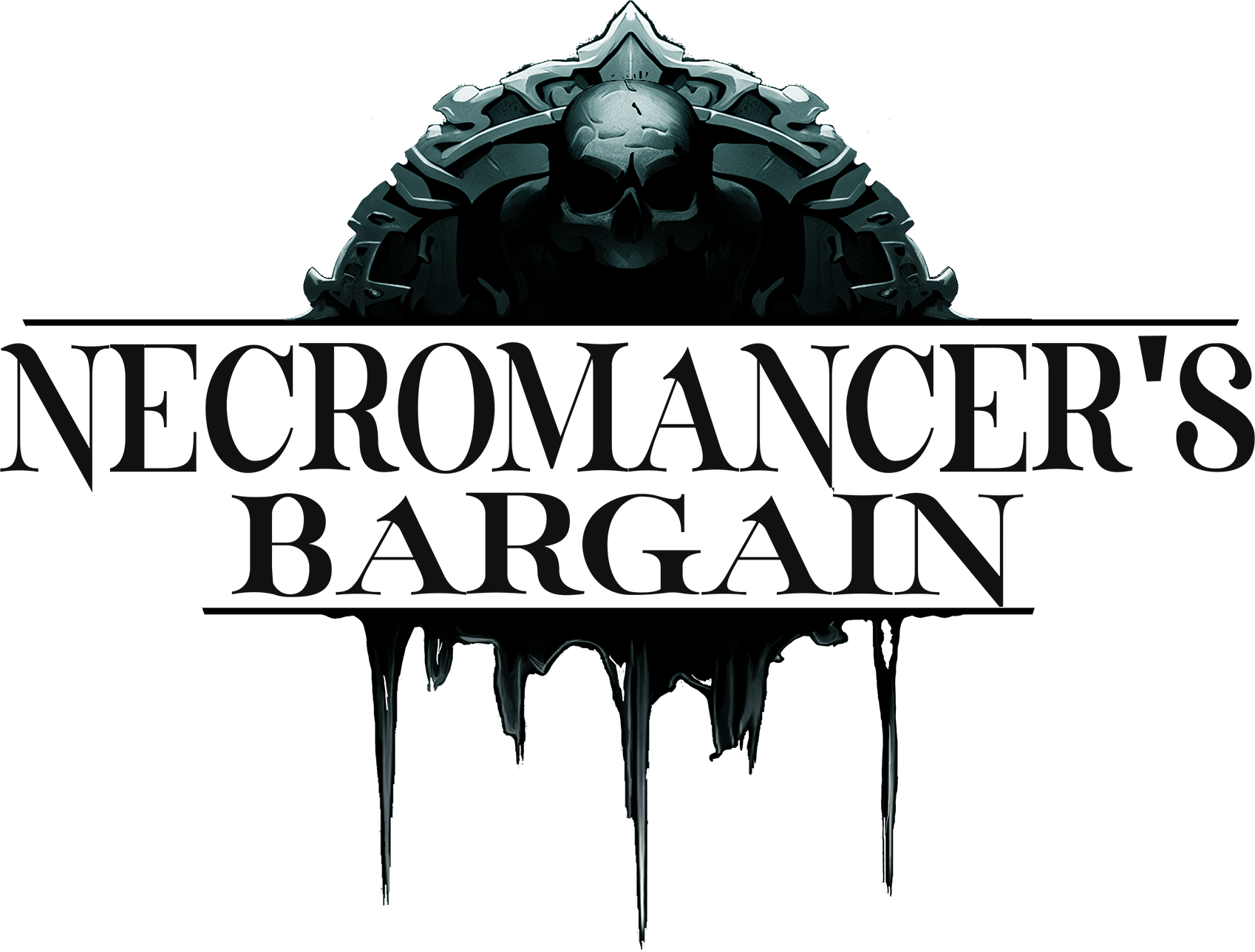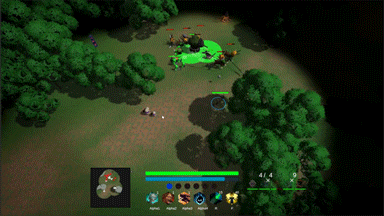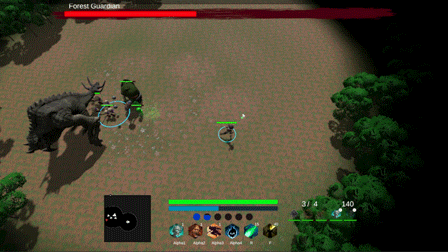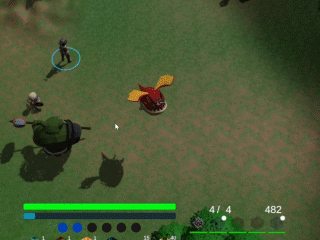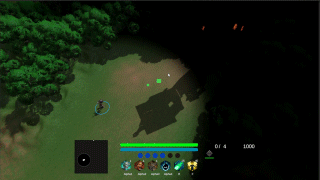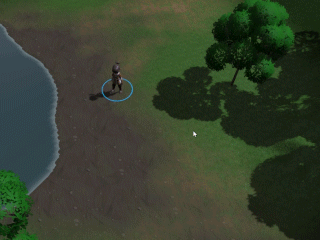Necromancer’s Bargain
Team Size: Myself
Initial Release: TBD - Currently in Early Development
Platforms: TBD
Genre: Real-time Strategy / Adventure
Engine: Unity
Role(s) and Responsibilities:
I am currently spearheading all aspects of game creation, from concept and design to art, programming, and production for Necromancer’s Bargain.
Everything shown below is in early development and is being developed by me along with some placeholder artwork used while blocking out levels and encounters.
Gameplay Features
Hero Unit
The hero unit is responsible for summoning units, casting spells, and world interaction. This unit serves as a mobile base for the player, wielding significant power, and being the source of building your army. The hero unit is deeply entwined with the game's mechanics as it being killed acts as a “loss” and will return the player to a rest area, underscoring the pivotal role of safeguarding this unit as a core design element and enforcing the need for tactical mastery.
The intent behind the hero unit is to fill the role of the home base in a typical RTS experience but allow the player to travel through the world with it and it being the constant within the game while the other units are much more disposable.
All of the other systems are designed with the hero unit in mind. The hero unit controls which units can be summoned, which spells can be casted, the runes that are equipped to the player unit modify and empower the other systems, and the hero unit is the conduit in which the story is told.
Customizable Armies
The summons system is incorporates units tailored to specific archetypes, including tanks, DPS, healers, and support. This adaptable framework grants the freedom to create a wide array of group compositions that align with what you want your hero unit's role to be. Whether you opt for a support role from the rear, strengthening your minions, or take an aggressive stance, harnessing your minions to enhance your hero's combat effectiveness, the system is designed to maximize your tactical options.
At the heart of the real-time strategy gameplay lies the ability to build and command your army. The strategic depth emerges from the diverse units, each fulfilling their unique archetype roles. This design emphasizes the need for mastery in unit control, ensuring that players face challenging encounters that demand a deep understanding of the 'rock-paper-scissors' dynamics typical of RTS games. These encounters encourage players to adapt their unit compositions, fostering diversity and promoting dynamic playstyles in response to varied challenges.
Player Spells
An extensive spell system offers players a wide array of damage, healing, and support spells, in addition to versatile auras, allowing for a personalized approach to gameplay.
The spell system is carefully structured to encompass a range of spell uses. Some are direct damage-dealers, while others apply damage over time effects. A selection of spells offers various healing capabilities, and certain spells can influence the flow of combat by stunning enemies or even changing the pathing of the level. Players will unlock new spells throughout the game by purchasing them from vendors or completing certain challenges as a way for the players to progress and gain more power.
The primary goal of this spell system is to provide the hero unit with a greater role beyond unit summoning and NPC interaction and allowing it to be a critical unit to micromanage during encounters. While it also introduces an additional layer of customization and depth to the overall gameplay and makes the combat more engaging.
Runes
The rune system offers a means for players to augment and fine-tune their preferred playstyle. Runes can be equipped to enhance the hero unit's capabilities or modify the behavior of spells and summons. Like the spell system, players can acquire runes by purchasing them from vendors or by completing certain challenges.
The primary purpose of runes is to obviate the necessity for an equipment system. It's structured to grant players access to diverse runes, effectively 'equipping' them to alter stats and abilities as they see fit.
Dialogue and NPCs
There is a robust dialogue and interaction system that allows the player to speak with NPCs throughout the world whether to discover its secrets and learn to master your abilities.
The system is designed to allow for the player to learn more about the lore and the individuals within the world without it being forced upon the players who are indifferent to it and just want to focus on the gameplay and challenge. It is also designed to allow for merchants and NPCs who can offer upgrades or quests to the player to be more fleshed out and feel more alive in the world instead of only being vessels to open a shop interface.
Prototype Gameplay
The areas within the world are strategically populated with adversaries, each possessing context-specific spells and tactics, promoting player consideration of unit composition and tactical agility in combat. The design goal for enemies and encounters is to simulate the intensity of an RTS experience, where player choices profoundly impact their army's survival, with each unit and encounter thematically aligned to the area's unique identity.
The game features imposing boss encounters, each distinguished by their exclusive abilities, challenging players to adopt precise strategic approaches. These encounters are designed to mirror the dynamics of MMO raid boss fights, prompting players to employ strategic unit positioning to evade damaging attacks and learn the tactics of the boss to learn how to defeat it effectively.
Overview
Necromancer’s Bargain is a single-player real time strategy adventure game with metroidvania style exploration and progression. Players command a diverse squad of minions, utilize a variety of spells, conquer formidable foes, and unravel a world filled with hidden secrets and challenges.
I am currently spearheading all aspects of game creation, from concept and design to art, programming, and production for Necromancer’s Bargain under the studio name of Waystone Interactive.
Everything shown below is being developed by myself along with the use of some placeholder artwork for blocking out levels and encounters.
